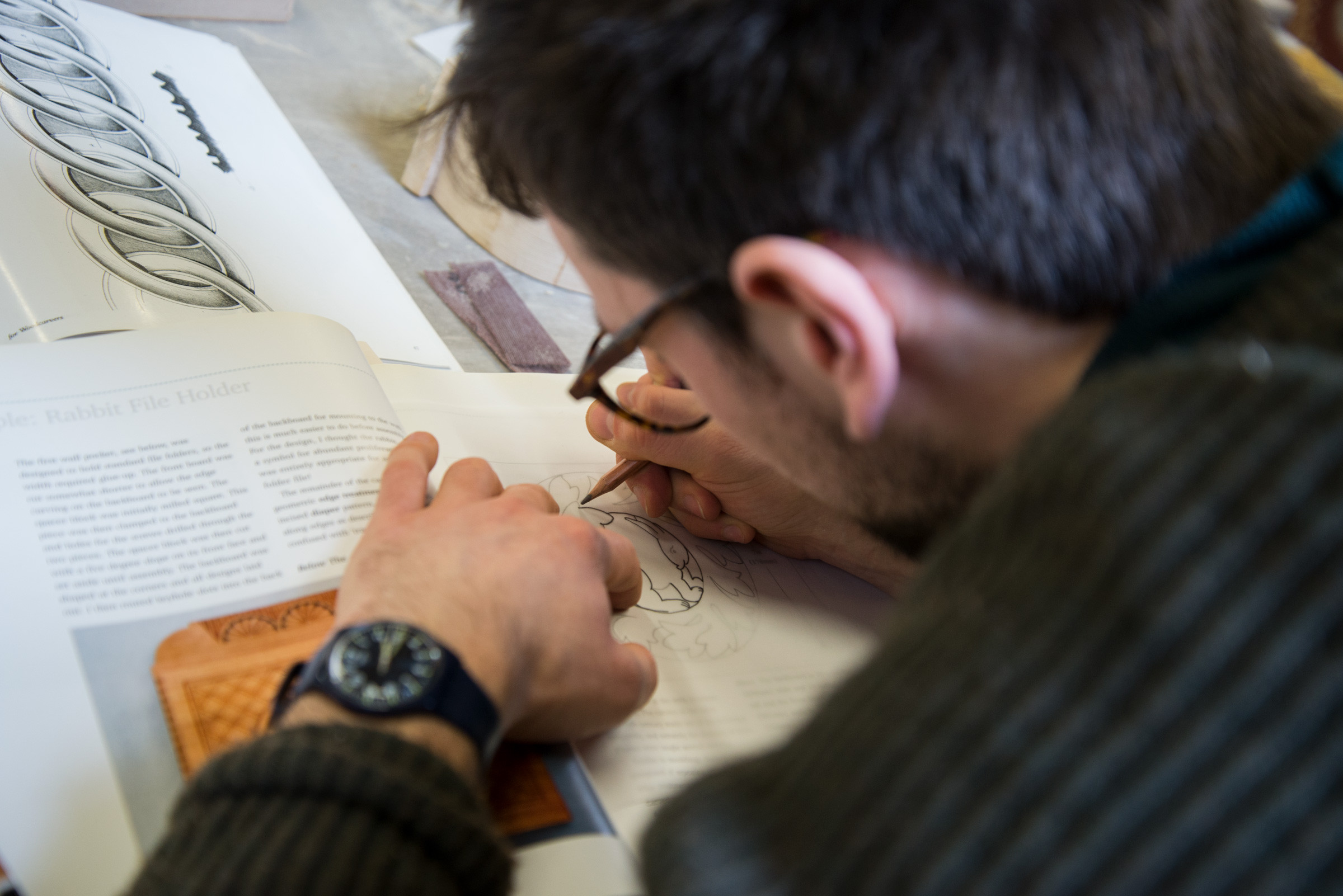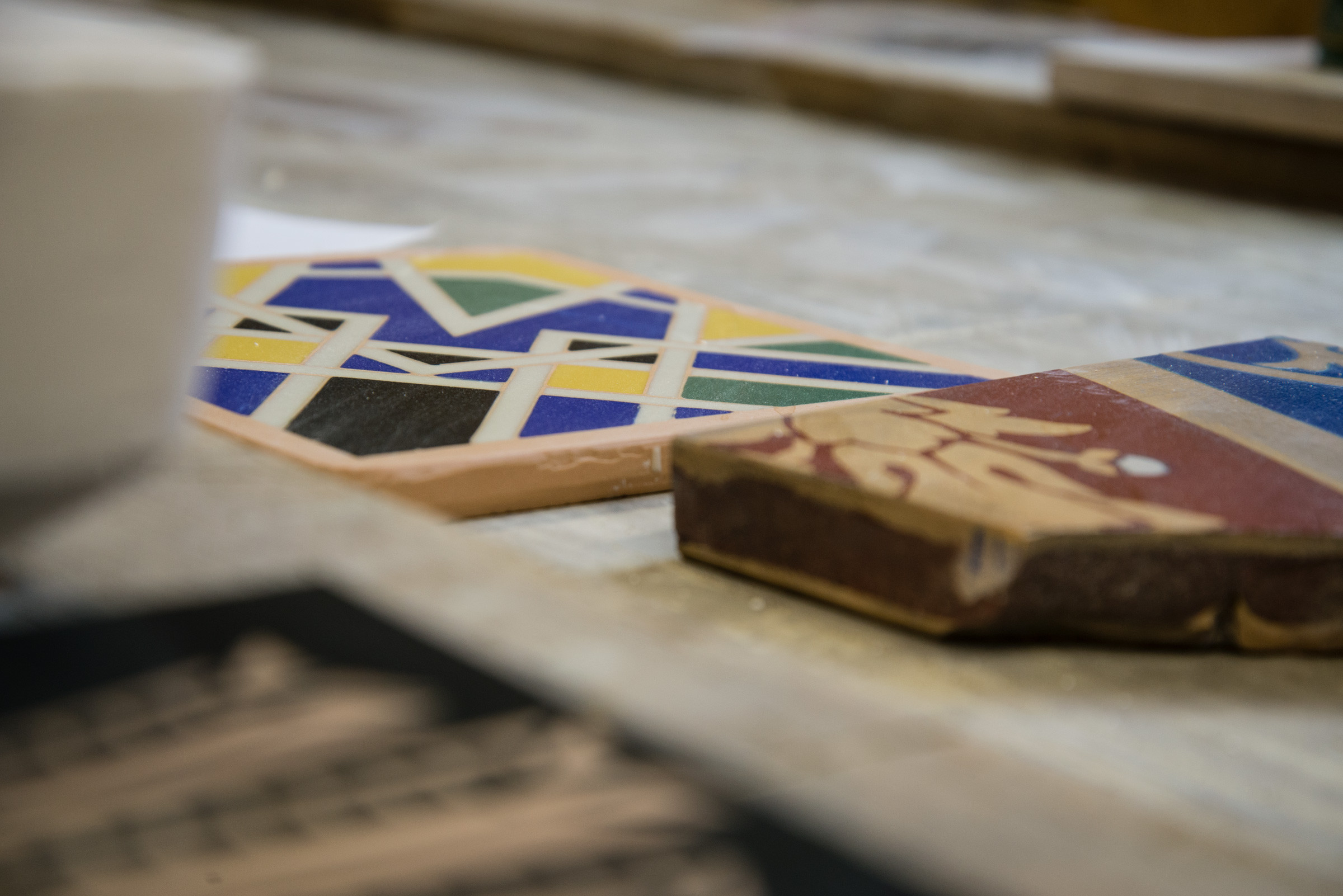Journal 10 March 2020
The Building Arts Programme
Exploring the role that building arts and traditional crafts have in the built environment
How does sacred geometry differ from Gothic and medieval geometry? How do you make an encaustic tile? What are the principles of stob thatching? These are just a few of the question addressed by the new Building Arts Programme based at Dumfries House. A collaboration between the Prince’s Foundation and the Queen Elizabeth Scholarship Trust, it explores the role of traditional skills in building, and why they still have an important part to play in the 21st century.


The first course began in February with eight students, each of them already proficient in a particular area: Jim Nightingale is a carpenter from Coventry, Saman Moein an architect from Iran. But by the end of nine months, they will have been introduced to – and had a chance to work in – a panoply of other disciplines. All the students are given full scholarships to cover their fees and a living allowance.


The course, sponsored by Ecclesiastical Insurance, complements the already established Building Crafts programme, which focuses on construction skills such as plastering. The idea, according to Michael Goodger, the foundation’s Built Environment Education Manager, was to recognise “the breadth of other crafts, trades, applied arts and materials that are integral to creating the whole picture”.
The programme begins with three weeks of talks and workshops, plus expeditions to important buildings such as Rosslyn Chapel. Next comes a series of eight week-long workshops taught by experts, on subjects ranging from masonry to gilding.

The students then disperse for three months to individual placements with leading figures in the built-environment industry, to develop their skills in greater depth. Finally, they spend 10 weeks working on a final project. These projects will be generated from conversations with key stakeholders and will look to respond to a real-life need. Example projects could include handcrafted furniture, acoustic panelling, architectural masterplan to a stained-glass window.

For Sarah Diver Lang, a 32-year-old designer and maker from Glasgow, the course was, “This programme gives me the chance to work with others to test and apply methods of craft to our built environment; looking at innovative methods of making our buildings more engaging and reflective of our heritage and communities. It’s fascinating to see how traditional processes can provide solutions to problems we’re having now, particularly around issues with climate change – and how craft can be used to create buildings that are really meaningful to people.”





